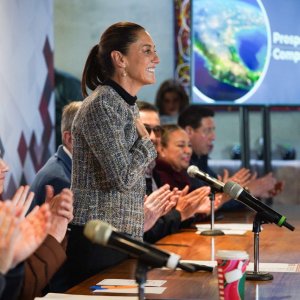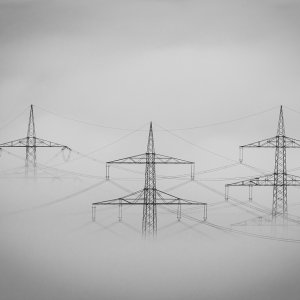
Ready to Cash In?
As the Energy Reform unfolds and takes a permanent hold across the country, especially as projects awarded at auction get ready to come online, opportunities are opening. Those companies that are ready to take advantage, such as EPCs, will reap the benefits
While the long-term electricity auctions have enjoyed the limelight in Mexico’s energy transition, the liberalization of the sector’s entire value chain has opened opportunities for many companies, local and foreign, to provide a wide array of products and services for each of the industry’s links. Among those already reaping benefits are EPCs, which are at the center of the utility-scale projects awarded during the auctions. Projects of this magnitude need a crystal-clear and effective risk-mitigation strategy during the project’s different phases. EPC companies’ know-how and specialization help them absorb the risks related to project construction, from the drawing board to operational business. These companies stand to be a project sponsor’s most valuable partner, as the former can ensure the bankability of a development. The demand for EPC services has even pushed some construction and infrastructure companies to turn their business toward renewables. “Generally speaking, renewable-energy projects mostly require process automation at the moment, especially for grout installations. Electric installation, material supply and inputs are practically standardized. We recognized that our strength in this sector would be to support developers and contractors in bringing projects to completion,” says Savir Ruiz, CEO of CODISA CORP Energy.
OPERATION AND MANAGEMENT (O&M)
2018 will be the measuring stick of the long-term electricity auction’s tangible success as the projects awarded during the first edition are scheduled to come online before year’s end. It also means O&M services will witness a surge in demand for utility-scale projects. Companies providing O&M services are looking to implement innovative, effective and heavily technological solutions to solidify their competitive edge and offer the best service available. “The fact that we consider a fully automated O&M solution from the beginning and not as an afterthought completely tackles one of the major challenges many asset owners face: module cleaning increasing the risk of module degradation by either putting weight on the panel or increasing risk of accidental cracking through manual cleaning,” says Victor Pazmiño, Senior Business Developer and Design Engineer of Alion Energy. Along with optimal performance, safety and security at renewable power plants are also set to become standard practice. “Safety is a value. It has to be ingrained. It does not start when you come to work, rather, when you wake up and make it part of your corporate culture, adopting a 365/24/7 mentality. When working in a wind power plant, we have to take every precaution regarding the people that we employ in those environments so they can go in and out seamlessly. If that is not your safety value as a company, then you are going to face tremendous obstacles,” says Peter Tattersfield, Independent Consultant of Axis Renewable Group.

CERTIFICATION AND DUE DILIGENCE
Despite the proven performance of renewable energy in more developed markets, Mexico’s young renewable energy industry boils down to reputation. If a particular product or service performs poorly, it could give Mexico’s energy transition a bad name. Private players have expressed concern that if the market remains price-driven, cheaper, low-quality products could derail a booming sector, leaving economic growth short of the potential offered in renewable technologies. “Installer certification is a major component as the quality of the installation directly impacts the performance of the PV system. Mexico’s solar market is progressively maturing and we will ultimately reach a point where product quality will be guaranteed with minimum certification requirements,” says Mario Muñoz, CEO of Solar Center. “Seasoned installers that transition from entrepreneurship to a mature company cannot take the risk of having a solar market with low-quality products, since they know low pricing is not sufficient to guarantee a prosperous business in the long-term,” he adds.
The importance of certification has even led to major corporate mergers, such as that between AWS Truepower, UL and DEWI. “AWS Truepower was mainly focused on the initial stages of the project life cycle, conducting studies on the availability of resources and some on the technical aspects of the technologies. After some years we went into financing by working on due diligence and engineering certification for banks. On the operations side, DEWI became a perfect partner, allowing us to provide structural and life-cycle analysis for technologies having the DEWI certification,” says Jorge Ochoa, Country Manager Mexico of AWS Truepower, a UL company.
While the need is dire, developing a gold standard for Mexico’s young energy sector can prove to be challenging. “There is no scheme that forbids you from importing certain types of modules or that imposes strict quality criteria. Our experience tells us the best way to address this is to allow the market that is developing distributed generation programs to simultaneously develop standards, laws and requirements for importing modules. Large-scale projects do not have this problem because project owners that have made sizable investments are averse to risk, including the use of uncertified products or components,” says Vitor Rodríguez, Regional Field Manager Solar South America of TÜV Rheinland.
Financial structuring and risk mitigation are at the core of the design of a utility-scale project suitable for long-term electricity auction participation. Due diligence processes exist to make sure all the appropriate steps are being followed to ensure not only the immediate success of the project by becoming operational, but also its long-term bankability. “Due diligence has its own particular characteristics. Mainly, preemptive detection of risks and timely mitigation. Beyond effective methodology, previous experience in similar projects gives you a solid reference to apply the acquired knowledge in renewable energy projects and singling out potential risks,” says Rodolfo Flores, Country Manager Mexico of DNV GL.
THIRD-PARTY SERVICES
Several global renewable energy heavyweights have made their presence known in Mexico’s renewable energy landscape, yet, even the largest companies require assistance from specialized third parties in areas that are not always a company’s forte, especially when utility-scale projects are at stake. Being a highly risk-averse market, insurance, reinsurance and other insurance-based companies are looking to capitalize on the renewable energy projects sprouting nationwide, while innovating their traditional insurance services portfolio. “We reinsure our clients' risks, which allows them to write more insurance business without having to increase their capital base. Insurance companies contact us with questions and given that our underwriters know about every segment of an energy project’s value chain, from the construction of a new power plant to its day-to-day operation, they visualize what risks are present and help the insurance company get the best coverage option for its client,” says Richard Schneider, Regional Office Head and Senior Vice President Americas at Swiss Re. The service is particularly significant considering financial entities also stipulate insuring the project as a sine qua non condition. “Banks always prefer projects that are predictable but sometimes they lack the knowledge to properly allocate risks because their expertise is not in the area of project management,” says Peter Jakszentis, Technical Services Director of Munich Re.
As a new market, Mexico’s energy sector can present a variety of business risks and generating certainty among interested and invested parties is vital for success. The sector’s technological dynamism and array of variables can sometimes prove too much for a single company and the slightest mishap can produce an avalanche of insolvency. “Ambit risks are especially relevant to us, such as regulatory changes, socioeconomic and political environments. In short, any and every variable that falls outside a company’s control, we take into consideration and present them transparently, granting our clients a reaction capacity through mitigation mechanisms that go beyond control measures, forming an integral action plan. In some cases, certain organizations do not analyze their market thoroughly, making their products and services unresponsive to its targeted niche, in turn developing a potentially catastrophic risk,” says Carlos Álvarez, Internal Audit and Business Risk Managing Director of Protiviti.















